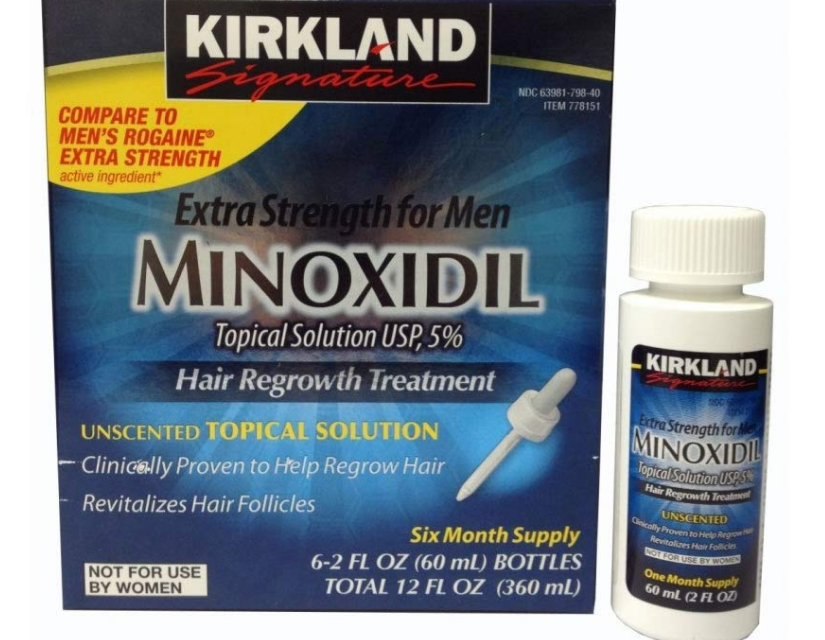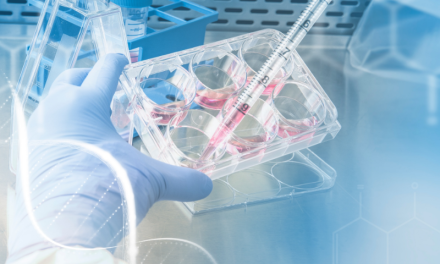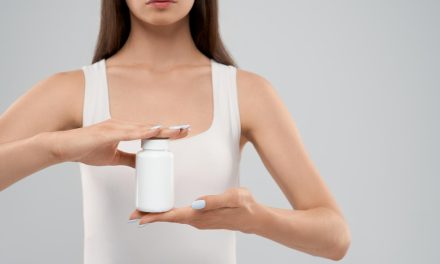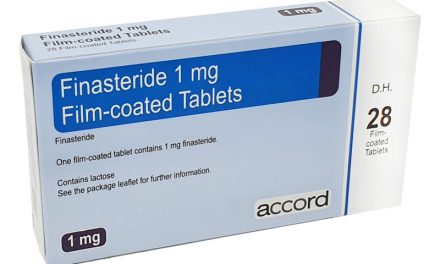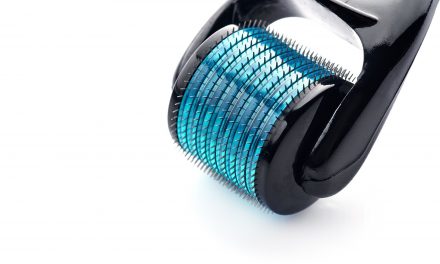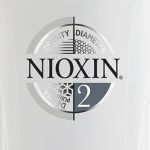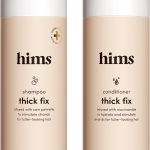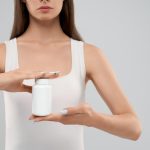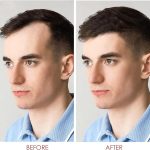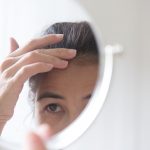Minoxidil, commonly known by its US market name Rogaine, is a clinically proven and highly effective treatment for male and female pattern baldness (androgenic alopecia) and it is U.S Food and Drug Administration approved. The hair regrowth capability of minoxidil was initially considered as a side effect of the drug based on a clinical trial done in the 1960s when minoxidil was still a treatment taken orally for high blood pressure, although up to this day, minoxidil is still used as a treatment for high blood pressure, but rarely. A topical formula derived from the oral drug was developed in the 1980s to treat men suffering from male pattern baldness or hair loss. 12 years later, the drug has been further developed to cater to women who also suffer from the same condition. This breakthrough led to today’s FDA approval of the drug as an effective solution to increase hair weight by increasing the preexisting hair’s diameter.
Minoxidil can be purchased over the counter or online, without the need for a prescription from a doctor. It is available in various forms such as foam, spray, or lotion and with varying strengths with 2 percent as normal and extra-strength with 5 percent.
So how does minoxidil work?
Old age, hormonal changes or heredity, underlying conditions, and even high levels of dihydrotestosterone or DHT in the scalp can result in male pattern baldness. Hair loss (male pattern baldness) happens when your hair follicles shrink in size, causing the hair in it to get damaged. This also thins out the hair in every affected hair follicle due to the shortened natural growth cycle of the hair. The hair then becomes thinner and finer and eventually, falls out. This is where minoxidil comes in. Considered a peripheral vasodilator, minoxidil expands (widens and loosens) every blood vessel in your scalp. This improves blood circulation and increases blood flow to the hair follicles. The hair follicles, in turn, gets larger due to the amount of oxygen and nutrients it receives from the increased blood flow. With the hair follicle’s size reversed from shrinkage, the now larger in the size hair follicle that is helped by minoxidil will now start growing thicker, stronger hair. Additionally, minoxidil will shorten telogen or the hair’s resting phase, promoting anagen or the growth phase which will enable the follicle to continuously grow hair thus more hair coverage on the scalp.
As aforementioned, minoxidil is approved by the U.S. Food and Drug Administration, but that comes with specifics on where the drug works and is effective: on the top of the scalp. With this, minoxidil is not clinically proven to also halt receding hairlines in both men and women as there haven’t been enough research studies to back up the claim. However, you can pair minoxidil with finasteride because both drugs work as a prevention for hair loss. While minoxidil facilitates hair growth by enabling hair follicles to receive ample amounts of oxygen-rich blood and nutrients promoting healthy hair regrowth, finasteride targets high-level amounts of DHT in the scalp which is the primary cause of hair follicle shrinkage, lowering them and encouraging hair growth. Since minoxidil does not guarantee help with receding hairlines, finasteride introduction will help with that. That means minoxidil and finasteride hand in hand will be an excellent medical combination in preventing hair loss or androgenic alopecia.
So how do you use minoxidil?
Since minoxidil is a scalp medication, you have to make sure that your scalp is completely dry before applying it. To ensure that the medication goes straight to your scalp, applying it in sections by parting your hair will help you avoid making a mess and not have the medication in your hair instead of on your scalp. You should also apply the medication in areas where hair loss is present with the recommended amount suggested by the manufacturer in the package information. Tilt your head back when applying the formula and move your hair out of the way so you can apply it directly to the scalp. Also, do not forget to wash your hands thoroughly after every use of minoxidil. You can apply minoxidil on your scalp in between a 12-hour interval for the treatment with the second application an hour or so before bed to avoid making a mess by rubbing off the medication all over your pillow. It is important for you to know that going beyond the daily suggested amount of minoxidil will not give you more benefits than it’s suggested, so getting tempted and actually using it more than twice a day will not only prove to be wasteful but could also put you at risk of side effects. Also, do not apply minoxidil to areas of your scalp that are infected, irritated, inflamed, or painful.
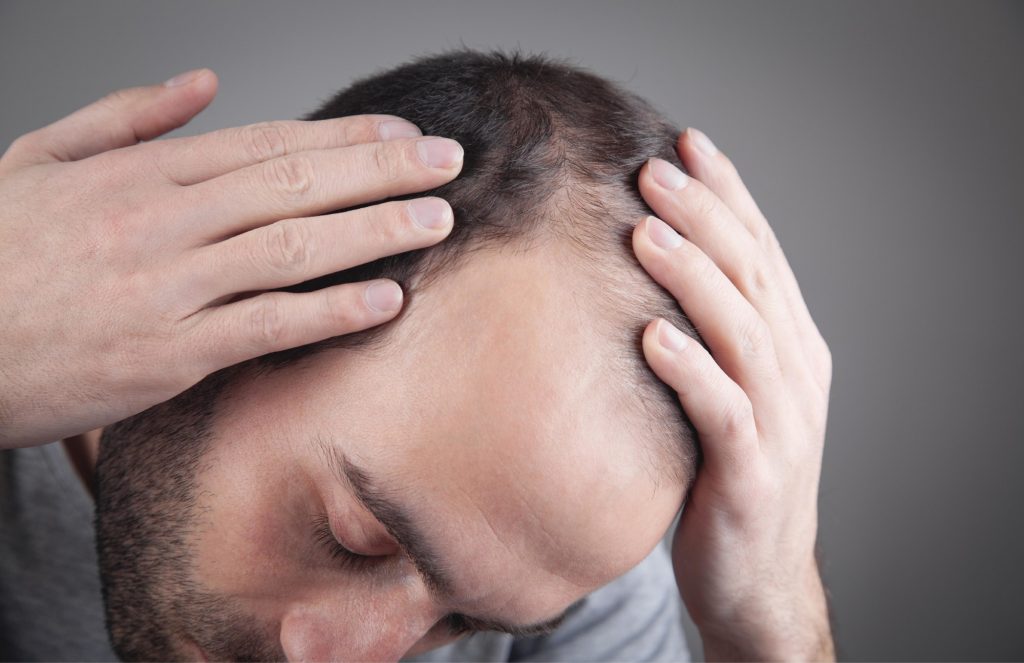
Men experiencing male pattern baldness or hair loss from age 18 to 65 are safe to use minoxidil with the rare occurrence of side effects. Since minoxidil promotes healthy hair regrowth by allowing blood vessels to pump oxygen and nutrients to the hair follicles, the damaged hair that is already there will fall out thus making it seem like you’re losing more hair. But you should not worry because that only means that the treatment is working and that your hair growth cycle is being regenerated, where the old and brittle hair is being replaced with new and healthy hair that’s stronger than ever.
Side effects for minoxidil use may include mild symptoms like reddening of the scalp due to irritation to more serious but uncommon ones like persistent reddening of the scalp due to irritation, rapid heartbeat, chest pain, sudden weight gain, and hypertension. If any of these symptoms persist, you should call your doctor right away. Furthermore, if you have a cardiac arrhythmia or cardiovascular disease, contact your doctor first for a consultation before using minoxidil.
In closing summary, minoxidil helps hair follicles facilitate regrowth by enabling blood vessels to pump oxygen-rich blood and nutrients to each follicle, making them larger in size, and giving way to new and healthy hair to grow. Although this treatment is specifically helpful to only the top of the head, pairing minoxidil with finasteride (which helps also helps stops hair loss concentrating on receding hairlines) is a perfect match for a healthy head of hair.
Sources:
https://www.hairclub.com/blog/will-minoxidil-help-regrow-my-hair/
https://www.getroman.com/health-guide/does-minoxidil-work/
https://www.healthline.com/health/does-rogaine-work#how-it-works
https://www.byrdie.com/minoxidil-for-hair-growth-4769934
https://aedit.com/procedure/minoxidil-rogaine
https://www.manual.co/health-centre/hair-loss/minoxidil/does-it-work
© 2016-2021 by BaldTalk.com, an LiVenture. All rights reserved. No part of this document may be reproduced or transmitted in any form or by any means, electronic, mechanical, photocopying, recording, or otherwise, without prior written permission of LiVentures.

